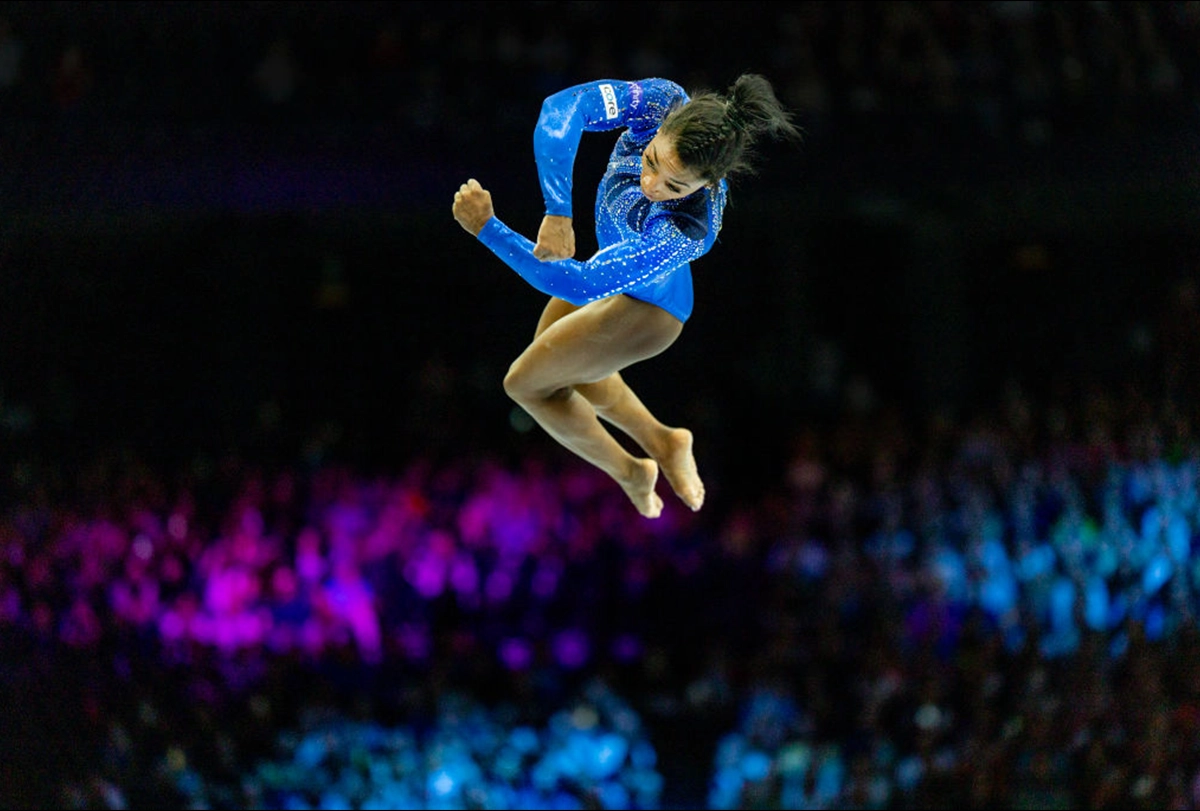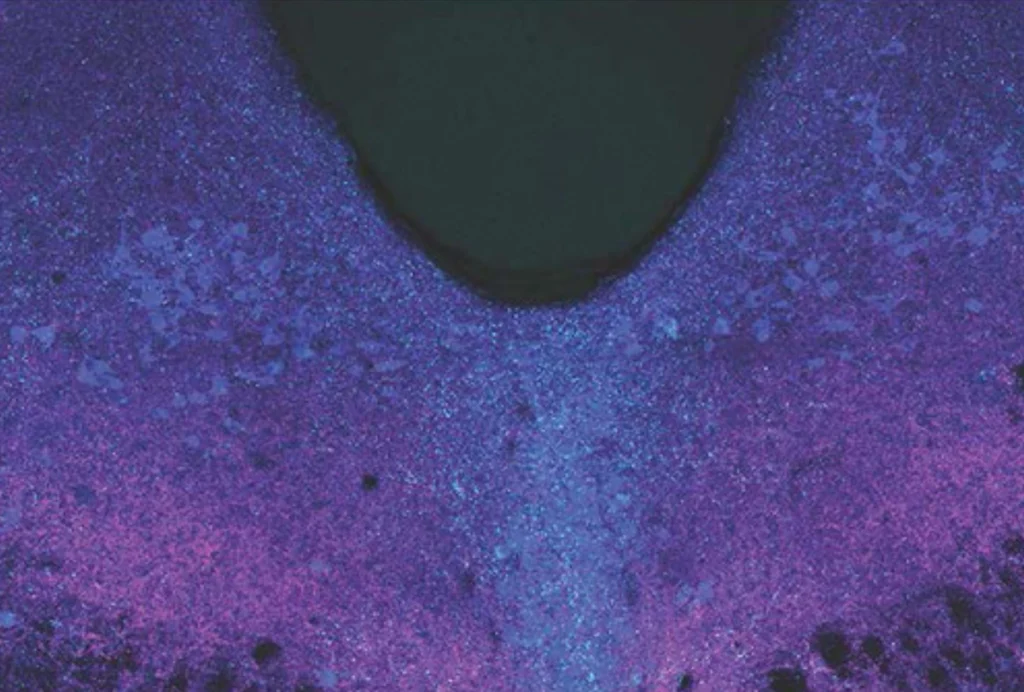One of the grand challenges in neuroscience is to understand the nature and mechanisms of memory. But memory is elusive. From an experimenter’s perspective, memory manifests only in behavior—how we do on a test, for example. But as I write this article, I can recall many memories without any observable change in behavior: My recollection of the amazing sushi dinner I ate last night, for example, exists whether or not I tell anyone about it.
Likewise, losing the ability to do something does not imply that memory is lost. Simone Biles, widely considered one of the greatest gymnasts of all time, did not experience memory loss when she famously got the “twisties” while vaulting at the 2020 Summer Olympics. Her problem was with performance, not memory; she failed to complete the vault because she felt unsure of her ability to translate her memory of action into behavior.
Memory can exist without a behavioral signature. And this concept, known as the learning-performance distinction, has profound implications for how we study the neuroscience of memory. Fundamentally, the learning-performance distinction means that neural manipulations that undermine learned behavior do not necessarily do so by impairing memory. In fact, the behavioral expression of memory can be influenced by many things, including motivation, fatigue or sensorimotor impairment.
With technological advances that enable scientists to probe the neural substrates of memory with unprecedented precision, this distinction becomes especially important. Yet neuroscientists new to the field are often unaware of the fundamental difference between learning and performance. Failing to appreciate this distinction once central to the neurobiological study of memory has led to work that obfuscates the literature and slows progress.
To advance the science of memory, researchers must design experiments with this distinction in mind. Fortunately, several strategies exist to help researchers tackle the issue.
T
hirty years ago, Richard F. Thompson and his colleagues beautifully dissociated learning and performance using an eyeblink-conditioning procedure in rabbits. In this task, rabbits learn to close their eye when they hear a tone that signals an impending irritating air puff to the cornea. This form of classical (Pavlovian) conditioning is highly adaptive and allows organisms to organize behavior proactively to anticipate future events.Thompson used an array of tools, including anatomical tract tracing, selective brain lesions and electrophysiological recordings of neural activity, to try to pinpoint the physical substrate of the conditioned response—the memory trace, or engram—in the brainstem. He suspected either the interpositus nucleus (one of the cerebellum’s “deep nuclei”) or the red nucleus in the ventral midbrain. Lesioning or pharmacologically inactivating either brain region prevented the animals from developing a conditioned eyeblink but did not affect their basic ability to blink (they still responded to the air puff).
The findings suggested either region could be the locus of the elusive engram. To distinguish the regions’ roles in learning versus performance, Thompson and his colleagues continued training the rabbits but stopped giving them the inactivating drug. When the interpositus nucleus was awakened, rabbits acquired the task no differently from naive animals that had never received previous training—in other words, the interpositus-inactivated animals seemed not to have learned the task during their previous training.
By contrast, animals initially trained when the red nucleus was inactivated showed perfect retention. They blinked in response to the sound on the very first reconditioning trial, performing identically to animals trained without the drug. Red-nucleus-inactivated animals had acquired the task normally, despite a complete absence of learned behavior during training, showing that the red nucleus is important for performing the learned response but not for learning or remembering it. The memory trace for this behavior, Thompson concluded, is localized in the cerebellum, a monumental discovery for the field.
Thompson’s work highlights the importance of the learning-performance distinction when interpreting the effects of neural circuit manipulations. Had his team not carefully analyzed when memory was preserved in the rabbits, they might have falsely implicated the performance limb of the eyeblink-conditioning circuit in memory processes.
I
n fact, performance deficits masquerade as memory impairments in many scenarios. For example, memories are best retrieved under the conditions or “context” in which they are initially encoded. Numerous studies in both humans and animals have demonstrated this phenomenon, known as context- or state-dependent memory.In a textbook example from the 1970s, study participants memorized word lists either on land or underwater (equipped with scuba gear, of course). Minutes later, they tried to recall the lists either in the same context (dry-dry, wet-wet) in which they had learned them or in a different context (dry-wet, wet-dry). Recall was far superior when retrieval occurred in the same context as learning, showing that poor recall of “out-of-context” information resulted from a performance deficit, not from a failure to learn the material.
These effects are not unique to environmental contexts: Drugs (e.g., alcohol or cannabis inebriation), cognitive contexts (e.g., task instructions or strategies), hormones (e.g., gonadal steroid levels) and satiety states (e.g., hunger or thirst) can all yield state-dependent memory, highlighting a confound for many neuroscientific studies of learning and memory—one that is becoming more common as our ability to precisely target brain cells increases. Manipulating neural activity might change the internal context in which information is encoded during learning. When memory is tested later without the brain manipulation, the mismatch in internal context undermines the ability to retrieve the memory.
My laboratory demonstrated just this sort of mismatch. Rats trained to fear a sound when the thalamic nucleus reuniens, which connects the medial prefrontal cortex and hippocampus, was pharmacologically inactivated showed impaired retention the following day. However, we could fully reverse this impairment by inactivating the thalamus during the recall test. Put simply, rats trained and tested in the same brain state retained the learned response perfectly, whereas those trained and tested in different states did not.
Again, our results make it clear that poor performance on a retention test does not imply poor learning or memory loss. The good news is that experimenters can detect performance deficits masquerading as memory loss using methods that reveal when memory is spared. They can identify generalization deficits caused by a mismatch in the learning and retrieval contexts (whether internal or external) by testing animals under common conditions. And learning curves provide important information about the acquisition rate and peak performance of learned responses.
Ultimately, behavioral designs that dissociate learning from performance will be essential to leveraging next-generation technology to advance the science of memory.






